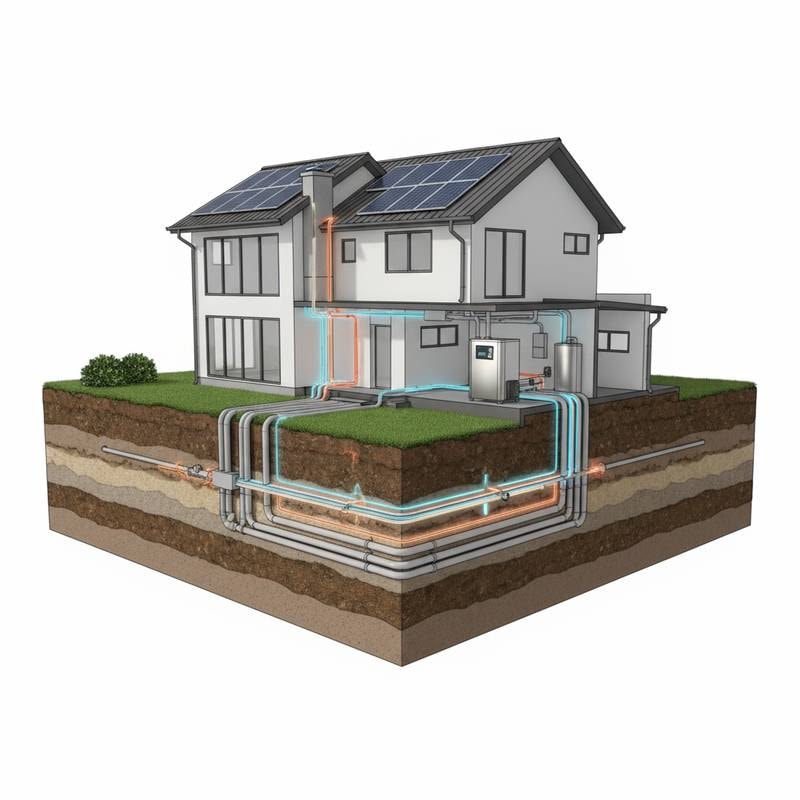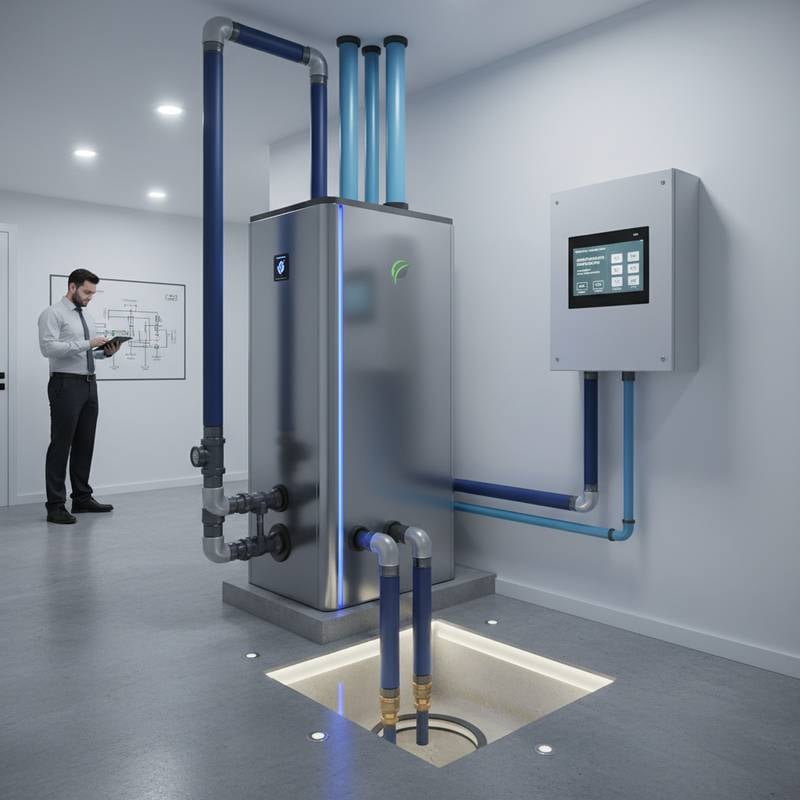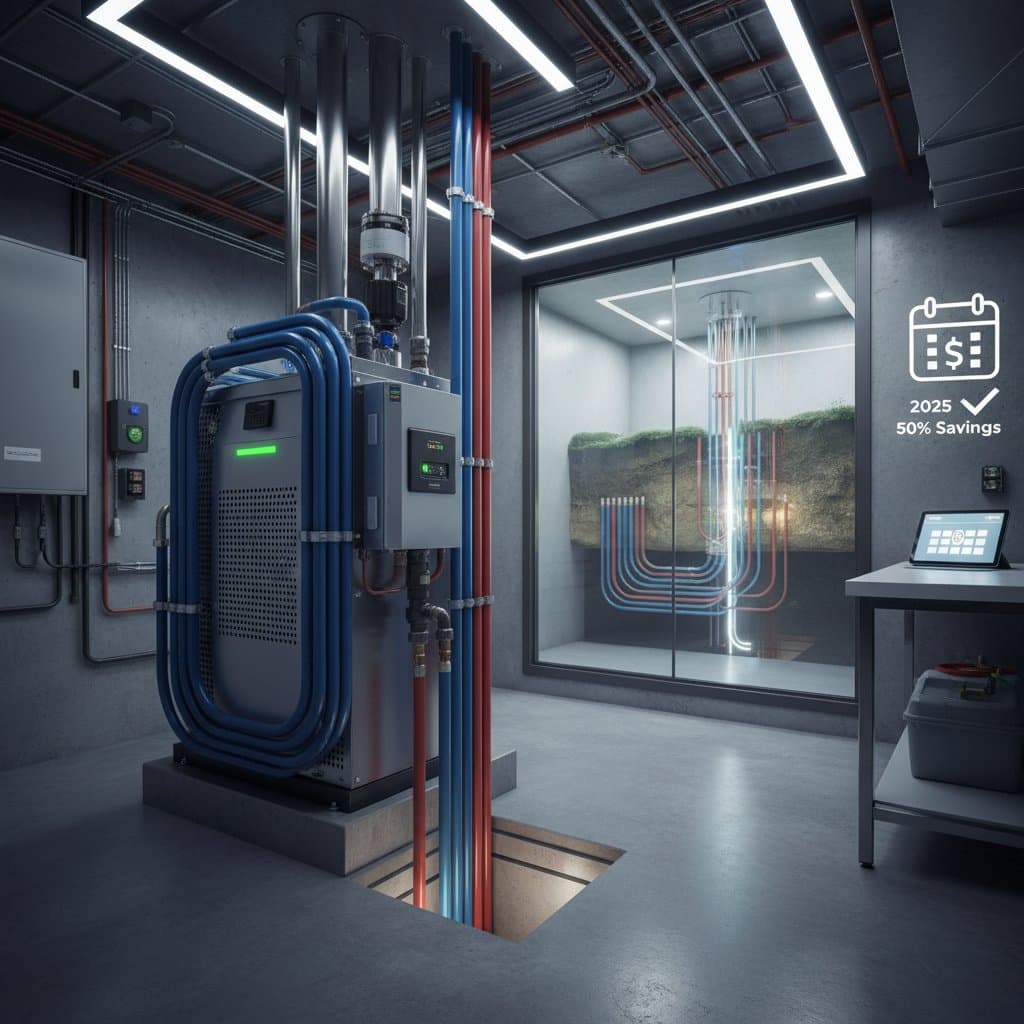Key Points
- Geothermal HVAC systems emerge as a leading option for new constructions due to their consistent comfort levels and reduced energy consumption compared to conventional heating and cooling methods.
- Property owners appreciate the substantial long-term financial benefits, silent functionality, and protection against fluctuating fuel prices.
- Factors such as regional financial incentives, advancements in drilling techniques, and heightened focus on sustainability drive widespread adoption nationwide.
- Optimal system design and professional installation remain crucial for maximum efficiency, with experts ensuring compatibility with local soil, climate, and site characteristics.
The Rise of Geothermal HVAC in 2025 Homes
Imagine entering a residence on a sweltering afternoon, where the usual drone of a compressor or the harsh rush of cooled air gives way to a serene, even temperature. The atmosphere remains fresh, and the mechanism functions with near silence from below ground. Green building professionals observe this reaction frequently as homeowners discover that their climate control draws directly from the earth's stable thermal energy.
Throughout the United States, households pursue methods to lower utility expenses and minimize environmental impact while preserving indoor quality. Geothermal heating and cooling have transitioned from specialized applications to standard selections in eco-conscious residences. These systems integrate dependability, high performance, and ecological benefits seamlessly.
Addressing Energy Inefficiency in Traditional Systems
Conventional HVAC setups depend on ambient outdoor air for heating or cooling purposes. Such approaches perform adequately in moderate weather, yet they falter during severe conditions. Compressors operate extended periods, furnaces consume greater fuel quantities, and expenses rise sharply. In numerous areas, heating and cooling represent almost 50 percent of a residence's overall energy demands.
Beneath the surface, however, temperatures remain steady throughout the year, regardless of surface extremes. This underground stability offers a reliable thermal resource that traditional homes overlook. Geothermal technology leverages this consistency to transfer heat efficiently, achieving up to 65 percent lower energy use than standard alternatives while delivering uniform comfort.
Factors Driving Homeowner Adoption
Multiple elements converge to position geothermal HVAC as a prudent choice:
- Substantial Energy Reductions: Well-engineered ground-source heat pumps decrease annual utility costs by several hundred dollars.
- Uniform Temperature Control: These units sustain steady indoor conditions, avoiding the abrupt changes associated with air-based systems.
- Ecological Advantages: Decreased reliance on fossil fuels results in meaningful reductions in greenhouse gas outputs.
- Extended Durability: Buried loops endure beyond 50 years, with internal elements lasting 20 to 25 years under routine upkeep.
- Available Incentives: Federal and local programs provide rebates that accelerate return on investment.
Green building specialists advise considering geothermal as a strategic enhancement for enduring comfort, financial autonomy, and planetary care.
Fundamentals of Geothermal System Operation
Geothermal setups function as efficient heat transfer mechanisms rather than generators of thermal energy. A network of subsurface pipes, known as ground loops and filled with a water solution, forms the core. In colder months, the fluid extracts heat from the soil and delivers it to an indoor heat pump for amplification and circulation via ducts or underfloor heating.
During warmer periods, the system reverses to extract excess heat from the interior and deposit it underground. Two primary loop configurations exist:
- Closed-Loop Designs: Fluid circulates within sealed horizontal or vertical pipe arrays.
- Open-Loop Designs: Groundwater from a well undergoes heat exchange before returning to its origin.
Selection hinges on land area, geological features, and aquifer presence. Certified installers assess these variables to recommend the most suitable configuration.
Strategies to Maximize Eco-Efficiency with Geothermal
- Conduct a Comprehensive Energy Assessment: Evaluate insulation and sealing deficiencies prior to system procurement. Addressing inefficiencies amplifies geothermal effectiveness.
- Select Appropriate Loop Configuration: Opt for horizontal layouts on expansive properties or vertical drilling in compact settings. Installers simulate performance for both.
- Ensure Precise System Sizing: Avoid mismatches by basing capacity on climate data, square footage, and usage patterns to prevent inefficiency and premature wear.
- Combine with Solar Integration: Linking geothermal to photovoltaic arrays approaches energy self-sufficiency.
- Facilitate Routine Servicing: Position equipment for easy access to support yearly evaluations and component replacements.
Evaluating Costs, Returns, and Reliability
Initial investments range from $20,000 to $35,000 for standard residential setups, exceeding conventional options. Nevertheless, rebates and operational savings alter the economics favorably. Utility reductions of 40 to 70 percent often yield recovery in 5 to 10 years.
This approach proves particularly viable for HVAC replacements or new builds, embedding durable infrastructure akin to essential utilities. Geothermal eliminates on-site burning, thereby avoiding combustion hazards and emissions while stabilizing grid loads through consistent operation.
Renewable energy engineer Dr. Lila Chen notes, "Geothermal heat pumps represent a dual solution for climate adaptation and superior indoor environments. As power networks incorporate more renewables, their role grows increasingly critical."
Addressing Typical Obstacles
Geothermal viability spans diverse locations, with adaptations to site constraints. Rocky terrains or confined spaces benefit from vertical bores reaching 100 to 400 feet. Softer soils favor horizontal excavations for cost efficiency.
Noise concerns prove unfounded, as primary elements reside indoors or subsurface, eliminating external units. Upkeep involves simple tasks like filter swaps and yearly inspections, with loops requiring rare intervention when properly sealed.
Steps to Implement Geothermal in Your Home
To proceed, consult certified specialists via trusted networks for site-specific evaluations of geology, layout, and consumption. Request local project references and comprehensive quotes covering excavation, hardware, and rebate applications.
Homeowners who adopt geothermal often report profound shifts in efficiency and tranquility. This technology fosters seasonal reliability, shields against market volatility, and aligns living spaces with sustainable principles.
Frequently Asked Questions
What is the typical lifespan of a geothermal system? Underground loops endure 50 years or more, while indoor units last 20 to 25 years with proper care.
Do geothermal systems function in all climates? Yes, designs adjust to local conditions, from extreme cold to intense heat, by utilizing earth's stable temperatures.
How much can I save on energy bills? Expect 40 to 70 percent reductions, translating to hundreds of dollars annually depending on usage and local rates.
Is professional installation necessary? Absolutely; experts ensure compatibility with your property to achieve optimal performance and warranty coverage.










